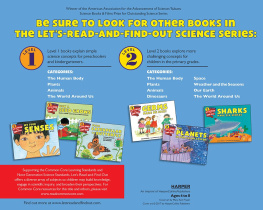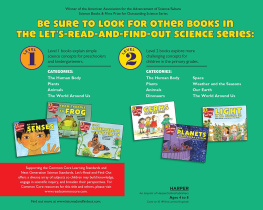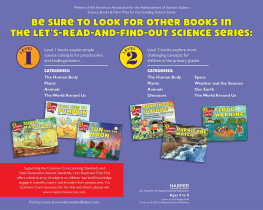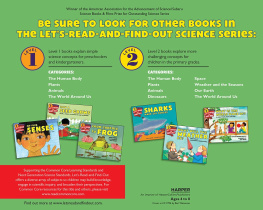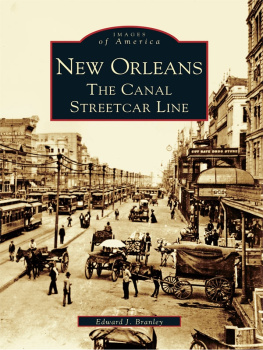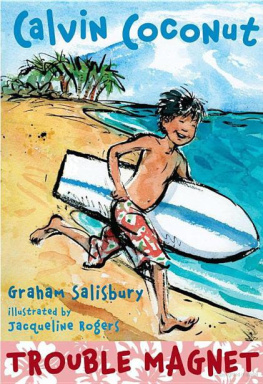Franklyn M. Branley - What Makes a Magnet? (Lets-Read-and-Find-Out Science 2)
Here you can read online Franklyn M. Branley - What Makes a Magnet? (Lets-Read-and-Find-Out Science 2) full text of the book (entire story) in english for free. Download pdf and epub, get meaning, cover and reviews about this ebook. year: 2016, publisher: HarperCollins, genre: Children. Description of the work, (preface) as well as reviews are available. Best literature library LitArk.com created for fans of good reading and offers a wide selection of genres:
Romance novel
Science fiction
Adventure
Detective
Science
History
Home and family
Prose
Art
Politics
Computer
Non-fiction
Religion
Business
Children
Humor
Choose a favorite category and find really read worthwhile books. Enjoy immersion in the world of imagination, feel the emotions of the characters or learn something new for yourself, make an fascinating discovery.
- Book:What Makes a Magnet? (Lets-Read-and-Find-Out Science 2)
- Author:
- Publisher:HarperCollins
- Genre:
- Year:2016
- Rating:4 / 5
- Favourites:Add to favourites
- Your mark:
- 80
- 1
- 2
- 3
- 4
- 5
What Makes a Magnet? (Lets-Read-and-Find-Out Science 2): summary, description and annotation
We offer to read an annotation, description, summary or preface (depends on what the author of the book "What Makes a Magnet? (Lets-Read-and-Find-Out Science 2)" wrote himself). If you haven't found the necessary information about the book — write in the comments, we will try to find it.
What Makes a Magnet? (Lets-Read-and-Find-Out Science 2) — read online for free the complete book (whole text) full work
Below is the text of the book, divided by pages. System saving the place of the last page read, allows you to conveniently read the book "What Makes a Magnet? (Lets-Read-and-Find-Out Science 2)" online for free, without having to search again every time where you left off. Put a bookmark, and you can go to the page where you finished reading at any time.
Font size:
Interval:
Bookmark:
tacks; a needle; paper clips and rubber bands; bits
of paper and aluminum foil; a pin or two.
What else? You decide. Choose things that are
small and light.
tacks; a needle; paper clips and rubber bands; bits
of paper and aluminum foil; a pin or two.
What else? You decide. Choose things that are
small and light.
end to a stick or a pencil. This is your fishing pole.
end to a stick or a pencil. This is your fishing pole.
in a pile. The others will stay in the box.
in a pile. The others will stay in the box.
needle, and pins but not the rubber bands and
aluminum foil. There is a reason why only
some things stick to the magnet. They have to
be made of the right stuff.
The material they are made of has to be
magnet sticky, or ferromagnetic .
Anything you lifted out of the box probably
has iron in it. The iron in these different
objects is ferromagnetic. Iron is not the only
ferromagnetic material, but it is the most
common.
needle, and pins but not the rubber bands and
aluminum foil. There is a reason why only
some things stick to the magnet. They have to
be made of the right stuff.
The material they are made of has to be
magnet sticky, or ferromagnetic .
Anything you lifted out of the box probably
has iron in it. The iron in these different
objects is ferromagnetic. Iron is not the only
ferromagnetic material, but it is the most
common.
have ferromagnetic material in them? Need a hint? Look at whats still in
your box!
The wood in a twig wont stick to a magnet. Wood is not ferromagnetic.
The rubber in the rubber bands wont stick to a magnet. Rubber is
not ferromagnetic.
What about paper? Aluminum? Nope. They are not ferromagnetic, either.
Theres something else about ferromagnetic materials. They can help you
make a magnet. Want to try?
have ferromagnetic material in them? Need a hint? Look at whats still in
your box!
The wood in a twig wont stick to a magnet. Wood is not ferromagnetic.
The rubber in the rubber bands wont stick to a magnet. Rubber is
not ferromagnetic.
What about paper? Aluminum? Nope. They are not ferromagnetic, either.
Theres something else about ferromagnetic materials. They can help you
make a magnet. Want to try?
sure it can stick to the magnet. Place it
on a table.
Hold it there with your finger on the
needles eye.
sure it can stick to the magnet. Place it
on a table.
Hold it there with your finger on the
needles eye.
from the eye of the needle to the point, not back and forth. Do this
about thirty times.
from the eye of the needle to the point, not back and forth. Do this
about thirty times.
If the object sticks to the needle, you have a new
magnet. The magnetized needle might even be
strong enough to pick up a few objects.
can pick up at once. Which do you think is
strongeryour fishing magnet or the needle
magnet? Try testing them to find out.
If the object sticks to the needle, you have a new
magnet. The magnetized needle might even be
strong enough to pick up a few objects.
can pick up at once. Which do you think is
strongeryour fishing magnet or the needle
magnet? Try testing them to find out.
They fit in your hand. But there are very large magnets, too.
In fact, the whole world is a magneteven though it doesnt look
like one.
You cant see the Earths magnetism, but you can make something
that shows you it is there: a compass .
They fit in your hand. But there are very large magnets, too.
In fact, the whole world is a magneteven though it doesnt look
like one.
You cant see the Earths magnetism, but you can make something
that shows you it is there: a compass .
Make sure your needle magnet still
works. Then get two small pieces of foam,
plastic, or cork. Carefully stick a piece on
each end of your needle magnet.
of water. The needle will swing around so
one end points norththe other end, south.
Keep the needle in the center of the bowl so
it can swing freely.
Turn the needle around. When you let go,
the ends will point the same way as before.
This happens because the needle magnet
reacts to the Earths magnetism.
Make sure your needle magnet still
works. Then get two small pieces of foam,
plastic, or cork. Carefully stick a piece on
each end of your needle magnet.
of water. The needle will swing around so
one end points norththe other end, south.
Keep the needle in the center of the bowl so
it can swing freely.
Turn the needle around. When you let go,
the ends will point the same way as before.
This happens because the needle magnet
reacts to the Earths magnetism.
a dot of ink on the north end of
the needle.
sets. Stand facing that way.
Keep this book in front of you.
a dot of ink on the north end of
the needle.
sets. Stand facing that way.
Keep this book in front of you.
directions because they are different from each
other. Each end reacts to the Earth magnet in its
own way.
One end reacts by moving and facing north. It is
called the magnets north-seeking pole , or simply its
north pole.
The other end moves and points in the opposite
directionsouth. This south-seeking end is the
magnets south pole.
directions because they are different from each
other. Each end reacts to the Earth magnet in its
own way.
One end reacts by moving and facing north. It is
called the magnets north-seeking pole , or simply its
north pole.
The other end moves and points in the opposite
directionsouth. This south-seeking end is the
magnets south pole.
you picked things out of your fishing box, they
stuck to the ends of the magnet, not the middle.
Poles make magnets work. Magnets make
compasses work. And compasses help people find
their way around the block or around the world.
Font size:
Interval:
Bookmark:
Similar books «What Makes a Magnet? (Lets-Read-and-Find-Out Science 2)»
Look at similar books to What Makes a Magnet? (Lets-Read-and-Find-Out Science 2). We have selected literature similar in name and meaning in the hope of providing readers with more options to find new, interesting, not yet read works.
Discussion, reviews of the book What Makes a Magnet? (Lets-Read-and-Find-Out Science 2) and just readers' own opinions. Leave your comments, write what you think about the work, its meaning or the main characters. Specify what exactly you liked and what you didn't like, and why you think so.


